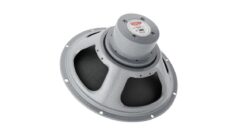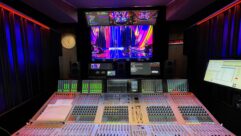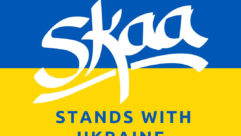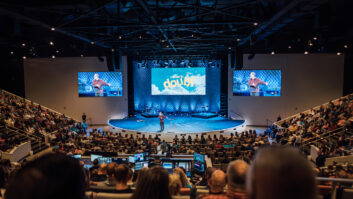
Cajun Invasion
Nov 1, 2001 12:00 PM,
By Paul Freudenberg
THE ROUGH CORRUGATED-TIN ROOF AND VINTAGE DETAIL of the House ofBlues in Disney’s Downtown Adventure, Anaheim, California, takes youback through time to the Louisiana bayou during a simpler era offront-porch acoustic blues, habañero peppers and blackenedcatfish. Traditional folk art emblazons every nook and cranny, andpaintings honoring great blues legends enliven the walls. You mightthink that a facility with this much affinity for the past might not beup to speed technically, but you’d be wrong. The House of Blues isconscious of its status as a premier music venue, and the A/V systemsshow it.
With clubs operating in New Orleans, Los Angeles, Chicago, Las Vegasand elsewhere, the folksy theme, diverse menu and unique retailadventure featuring popular folk art trademarks, appeal to a variety ofaudiences. Of course, a major part of the House of Blues experience isthe visibility and sound of live music, television, Internet andDVD-based visuals throughout the clubs. Until recently, this was atricky part of the HOB system design. But with the addition of BSSAudio’s Soundweb, changing entertainment in any room is now as simpleas pushing a button.
With the opening of this venue, their eighth, this January, HOBdecided to try something new with the audio/video system. Aron Levine,director of production for HOB Entertainment Inc., explained thereasons for introducing new equipment to the system design. “Wehad been using a combination of products to handle distributed audioand video connections and were unhappy with the features and systemperformance.” Further, Levine explained that the previousfeatures were not entirely appropriate for the unusual needs of theHouse of Blues.
VIDEO FOLLOWS AUDIO
In the HOB design, audio is the primary focus. “The whole ideais to create an environment around music,” reported Levine. Butbecause we live in an MTV age, many visual displays also grace thewalls. To incorporate both aspects, the venue developed a new mantra:Video follows audio. This is the opposite of most situations.
“System integration is very important at HOB because ninedifferent zones within the club are fitted with a JVC television ormonitor,” Levine said. He was not satisfied with the way theseinterfaced with audio and video through the existing controls andswitches. But after hearing from Ken Bachelor at the JBL Systems Groupabout the possibilities of the Soundweb DSP processor and the unique9010 remote, Levine was convinced that Soundweb would be the answer toHOB’s A/V interfacing problems.
Configuration
The A/V equipment at the House of Blues is located in the loft abovethe live stage and houses all sound distribution equipment. Variousaudio and video feeds are sourced here, including DMX broadcast, DVD,VHS, HOB TV (a Gefen Systems A/V jukebox) and feeds from cameras on themain stage. In addition, power amplifiers for the JBL Control 25 and26C speakers are distributed throughout the venue. All of the audiosources are fed into a single Soundweb 9088ii-LL. From there, the audiopath is digital, traveling on Category-5 network cable, first feedingthe 9000 hub, which does the source selection processing, and returningto the 9088 for output processing before it gets to the amplifiers.
The 9000 hub also acts as a network star point for six 9010 remotesdiscreetly located throughout the venue. Again, Cat-5 cable connectsthe remotes to the hub. The Cat-5 Soundweb network provides a dataconnection for each of these remotes but also acts as a digital audiosnake, carrying the analog input from the 9010 (in this case internaland external microphones), and delivering the signals to the Soundwebhub for more digital processing. The 9010s require a DC voltage of 24volts to operate. In this case, a central PSU in the equipment loft hasa home-run of 12 AWG to each 9010. In other installations, this may befed to the remotes via the network using a 9011 network poweradapter.
Much of the operator simplicity was acheived with trick programmingof the Soundweb. In the design, the audio source selectors have hadtheir addresses assigned to the serial export function of Soundweb. Inoperation, a 9010 remote activates the source parameter, and theSoundweb 9000 hub in turn echoes the source changes on the serial port.The RS-232 output feeds a Crestron interface programmed to convert theSoundweb RS-232 messages into an ASCII code capable of activatingassignments on the Knox 8×8 video switcher.
More complicated adjustment of the system can be attained by using acomputer and the custom control screens developed specifically for thisjob. One screen allows the operator to view meter levels and adjust thelevel or the source. On a series of panels, the operator can scrollthrough each input processing chain to adjust the tuning of thehigh-pass filter, EQ compression and limiting (See Figure 1).The outputs are adjusted similarly. There is also a panel for the extravideo-only zones. On a test page, the operator can produce either atest tone or program and assign it to any input, providing a completeaudio throughput test for the system. Since each 9010 remote has anRS-232 port on the rear panel, a computer can be brought to any one ofthe six zones, and the system can be equalized or leveled whilemonitoring test or program signals.

Control Freaks
The variety of audio sources requires a flexible processing path tocondition the various inputs. Soundweb’s powerful DSP engine has beenprogrammed to provide each input channel with a high-pass filter, a6-band parametric equalizer, compressor and limiter before feeding thehub for source selection for each zone. Within the 9000 hub, a leveleris added after the source selector to adjust overall levels, whichmight change between sources.
Since it is likely for noise levels to change during the day,additional level change is influenced via the ambient noise compensatorprocessing object, allowing the system to be relatively self-adjustingfor most normal operation. Microphones built into the 9010s pick up thenoise in each zone, and the signal is sent via the network to the 9000where it is used to adjust the sense input of the ambient processingobject. These remotes are located in the inside restaurant, patio,balcony, retail area, green room and lobby. Two of the 9010 remotes(restaurant and lounge) perform double duty by accessing the video-onlysource selector for both the balcony and the main floor video monitorsin the music hall.
Along with being able to easily switch the audio/video feed locally,any user can make simple volume and EQ changes to the zone’s soundthrough the remote. It is simple for HOB managers to change A/Vchannels throughout the building. A skilled technician is only neededto access the more complex features of Soundweb (compression, ambientnoise compensation, etc.) through a password-protected series of menuson the 9010.
Final output processing includes filtering, EQ and an outputlimiter. Additionally, all eight outputs are put through an 8-channelganged-gain object. The primary purpose of the device was to allowfire-alarm muting, since all eight mute channels can be activatedsimultaneously, but the system also has a master volume control.
Each remote creates a zone for the television and speakers, enablinga staffer to select a specific audio to suit the audience’s mood. Forexample, if people on the outside patio are interested in seeing aWebcast, the bartender can select that preset on the remote and thetelevision will immediately switch to follow the Webcast’s audio thatis heard in that zone’s speaker system. Similar scenarios play out withaudio and video feeds from CD, DVD, VHS, satellite, live entertainmentcameras, etc. This flexibility is appreciated because it allows staffto assess and respond to the changing desires of the crowd.
Another requirement put upon the designers was to allow localmicrophone mixing for two zones. An external microphone input was used,and a special menu page was added to allow local mic or line select orthe main foreground music feed. Levine explains, “On the outsidebalcony, rather than an entertainer or speaker bringing in a standaloneplayback system for a specific event, a local input is plugged into awall-mounted XLR that connects to the back of the 9010 remote in thatzone.”
COMPUTATIONAL GENIUS
In this system integration, the laptop computer was an essentialpart of enabling the various pieces of equipment and verifyingcommunications. The BSS Audio software, Soundweb Designer version 1.22,was utilized in programming the DSP signal path, develop the customcontrol panels (for computer operation), program the 9010 remotes, andcreate the RS-232 control strings. All of these functions have beencleverly packaged in an object-oriented fashion, allowing theprogrammer to deal with visual objects rather than bytes, ASCII or HEXaddresses.
Once programmed, the Soundweb devices are loaded with theappropriate code. Since the Soundweb units are given unique devicenames (such as Restaurant Remote, HOB Hub, I/O DSP) the system loadseach device with only the appropriate program. Each hardware devicestores the program in nonvolatile flash EPROM so if the device were tobe temporarily powered down, it will return to exactly the way it wasset before.
Similarly, the Crestron interface was programmed using SIMPLWindows. The Crestron program provided for declaration and setup of thehardware (in this case, a CNMSX-AV) and programming interpretation ofthe RS-232 program strings. Here, a macro provided by Crestroninterprets Soundweb formatted codes coming from the RS-232 port.Following the serial interpreter, each source selector is givingdata-in and data-out specifications. Lastly, feedback is generated, andan ASCII string is output to correspond to each video I/O combination,which follows the audio source selectors.
Ready, Set, Whoops
Not unlike other projects, the programming theory is one thing, butimplementation and troubleshooting is quite another. Upon loading thevarious devices, one hopes for everything to work exactly right thefirst time…but often it doesn’t. For the first run-through atHouse of Blues, the audio system worked properly, but the videoswitching didn’t.
Fortunately, troubleshooting was part of design for this system.Computers were essential in monitoring the individual components forproper operation. The troubleshooting mission began by looking at theSoundweb RS-232 output, ensuring that the appropriate commands wereindeed coming out. A development tool, the Soundweb Message Tool, wasused. This software monitor allows users to send and receive RS-232messages in the three methods that the Soundweb recognizes, allowingthe programmer to probe the Soundweb to see what code string willadjust a particular parameter. This software tool also allows you tomonitor what comes out of the RS-232 port, which is exactly what thedesigners did. Everything was coming out fine, so the Crestron wasexamined next.
Crestron has a serial debugging tool within SIMPL Windows, whichallows the programmer to see incoming and outgoing codes as well. Thiswas used to verify the presence of the incoming serial strings and tomonitor the outgoing ASCII strings. Everything looked okay, but theASCII string that the Knox switcher expects is very particular. Theformat is easy enough: first, a letter (A for audio channel, V forvideo channel), then the output channel followed by the input source,and then an ENTER. For each source select change in the Soundweb, acorresponding ASCII code was programmed to fire the Knox.
As it turned out, the Knox is particular about what kind of CR itreceives. One ENTER is just that, while the other is an ENTER with anadditional line feed command. Once changed, the Knox worked flawlessly,following the lead of the Soundweb-driven Crestron. So, in the end, allthe high-level, visual-programming aids worked fine — it was thesimple ASCII-based language that caused the snafu!
SIMPLE DESIGN AND REPLICATION
One additional design goal of this system was to produce a templatethat could be used in future venues without much modification. Indeed,that’s what happened in June of this year when HOB management decidedto upgrade the control/processing system at the prestigious House ofBlues Foundation room atop the Mandalay Bay hotel in Las Vegas. TheSoundWeb design used in Anaheim was adopted, although about 90% of theoriginal programming was used because of the Las Vegas venue’s specialneeds.
For instance, the lounge area requires a DJ to be able to jack intothe system without changing the program in the other zones. TheSoundweb, as we’ve seen, is programmed to allow external input and togive it exclusive routing to a single zone. The change can be madewithout disturbing the audio in any other zone.
House of Blues boasts endless entertainment, and now, by learninghow to seamlessly integrate audio and video, they have even more waysto satisfy their clientele. As Levine concluded, “For the firsttime in the last five years, I feel like I’ve found the solution todistributed audio and video for entertainment facilities.” Fromthe nation’s best live acts to the latest and greatest satellitetelevision programming, every room can be customized to the beat of theaudience. Additional House of Blues venues are currently planned andunder construction across the country, each having plans to use the BSSAudio Soundweb system. And, by the way, you can still catch somekickin’ blues with that plate of catfish.
Paul Freudenberg is the director of sales and marketing at BSSAudio USA and oversees the distribution and operation of BSS productsin the United States. His claim to fame is working as a technician andengineer for Motown Records, with Stevie Wonder in the early days ofWonder’s career. Now he plays guitar (including blues) in occasionalweekend gigs.
What’s DSP Got to Do with It?
Audio is a large part of creating a mood in themed entertainmentand retail environments. Often this means more than simple backgroundmusic. Audio in such environments can involve multiple program sourcesfrom different media at different levels, requiring specialconditioning and providing zones with different feeds and auxiliaryinputs. In extreme cases, sound effects, motion control shows, or evennoise masking becomes the task of the sound system.
Integrating and custom configuring more signal processing is theprimary way consultants address such complex client needs. In an analogsystem, this could mean dozens of separate standalone effects andprocessors.
This is where the beauty of a DSP-based sound system comes in. Byconcentrating multiple effects in one piece of hardware or software,digital signal processing, or DSP, allows a level of integration andsimplicity that before now has not been available. For example, DSPavoids the wiring — and the subsequent noise, termination costsand reliability issues — required by even the most elementary ofmodular approaches.
In addition to regular DSP processing functions (operations withanalog equivalents like mixers, parametric EQs and compressors), DSP isperfectly suited for more exotic processing solutions such asambient-noise sensing, automatic mixing, feedback elimination, dynamicequalization and FIR filters.
The most versatile processors also allow many interconnectivityoptions between the devices. For the programmer, this provides theability to experiment for the best combination and arrangement of thehookup. For the client, it means the sound system can be revised andupdated via software changes alone, and it provides the flexibility toadd or modify systems on site.
FOR MORE INFORMATION
BSS Audio
www.bss.co.uk
Circle 226 on Reader Service Card
Crestron
www.crestron.com
Circle 227 on Reader Service Card
DMX/AEI
www.aeimusic.com
Circle 228 on Reader Service Card
Gefen Inc.
www.gefen.com
Circle 229 on Reader Service Card
JBL
www.jblpro.com
Circle 230 on Reader Service Card
JVC
www.jvc.com/pro
Circle 231 on Reader Service Card
Knox
www.knoxvideo.com
Circle 232 on Reader Service Card










